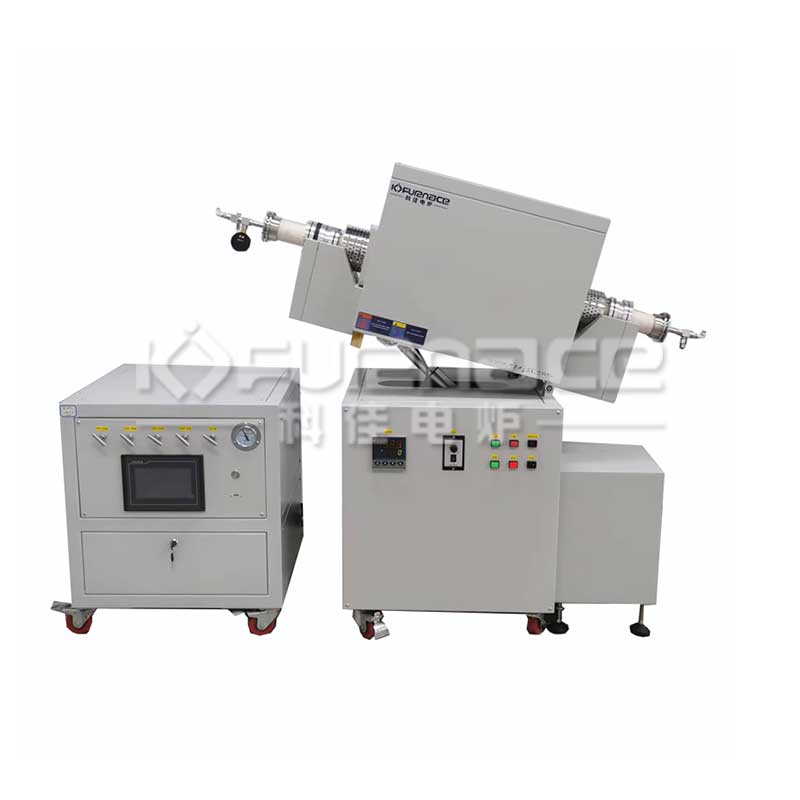When selecting an experimental vacuum atmosphere rotary furnace, multiple key factors need to be considered to ensure that the selected equipment can meet the experimental requirements. Let’s take a detailed look at what to pay attention to when choosing an experimental vacuum atmosphere rotary furnace!

Commonly used laboratory rotary furnaces (click on the image to view product details)
1. Clarify experimental requirements
Material type: Determine the type of material that needs to be processed, such as powder materials, ceramics, metallurgical materials, etc. Different materials may require different furnace materials and heating methods.
Process requirements: Understand the temperature range, heating speed, insulation time, and other process requirements required for the experiment. These parameters will directly affect the selection of the rotary furnace, ensuring that it can meet the specific conditions of the experiment.
Production demand: Select a rotary furnace with appropriate volume and heating power based on the experimental scale and production efficiency requirements.
2. Furnace type and structure selection
Furnace type: There are various types of experimental rotary furnaces, such as single temperature zone, multi temperature zone, inclined, etc. Select the appropriate furnace type based on the specific requirements of the experiment. For example, for experiments that require high surface utilization, a tilted rotary furnace type can be chosen; For experiments with high design loads, it may be necessary to select cylindrical furnaces, multi temperature zones, etc. through technical and economic comparisons.
Furnace tube material: The furnace tube material directly affects the high temperature resistance and service life of the furnace. Common furnace tube materials include stainless steel, corundum tube, quartz, silicon carbide, etc. Select the appropriate furnace tube material based on the experimental temperature and requirements.
Atmosphere control: Consider whether the experiment needs to be conducted under specific atmospheric conditions, such as nitrogen, argon, and other inert gas protection. Choose a rotary furnace with atmosphere control capability to ensure the accuracy of the experimental environment.
3. Performance parameter evaluation
Heating method: Electric heating is a commonly used heating method for experimental rotary furnaces, which has the advantages of high temperature control accuracy and easy operation.
Temperature control accuracy: High precision temperature control can ensure the accuracy and reproducibility of experimental results. Choose a rotary furnace with a high-precision temperature control system.
Furnace tube speed and inclination angle: The furnace tube speed and inclination angle can be adjusted according to experimental requirements to optimize experimental results. For example, adjusting the furnace tube speed can improve the heating uniformity of materials.
4. Safety performance and after-sales service
Safety performance: The experimental rotary furnace may involve hazardous factors such as high temperature and high voltage during operation. Therefore, choose a furnace with comprehensive safety protection measures to ensure the safety and reliability of the experimental process.
After sales service: Choose a manufacturer or brand with good after-sales service so that you can receive timely technical support and solutions when encountering problems during use.
5. Cost effectiveness considerations
The price of experimental rotary furnaces varies depending on factors such as brand, model, and performance. When choosing, you can weigh your budget and actual needs and choose products with high cost-effectiveness. At the same time, consider the long-term usage costs of the equipment, including energy consumption, maintenance costs, etc.

Rotating vacuum rotary tube furnace (click on the image to view product details)
In general, when choosing an experimental vacuum atmosphere rotary furnace, it is necessary to comprehensively consider multiple factors such as experimental requirements, furnace type and structure, performance parameters, safety performance and after-sales service, and cost-effectiveness. Through comprehensive comparison and evaluation, choose a rotary furnace that suits your experimental needs.Click to learn more tube furnaces! Or click on online customer service to learn more about product information!